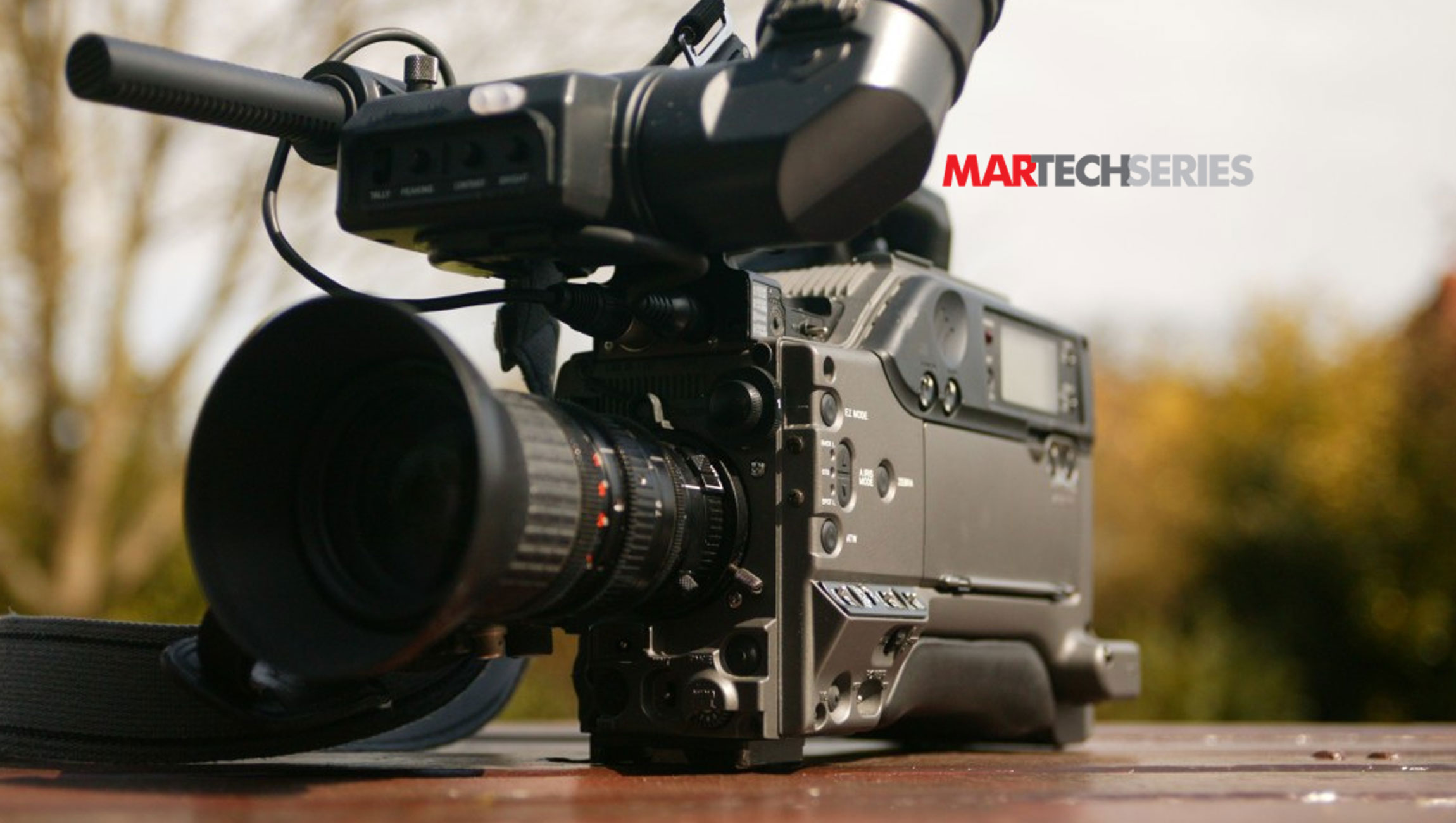Emerging Technologies Are Extending Video’s Outreach
Advancing technologies aiding the development of video content are creating new markets and inspiring teams to design newer methods to drive sales. This is promising for marketers who are already increasingly adopting videos in their B2B marketing campaigns. Video promotions are becoming the norm. Content-rich videos are increasingly becoming popular among B2B audiences.
Forbes Magazine made the following observations:
- 50% of online traffic is dominated by video
- 60% of the marketing community is using video in their campaigns, with 73% planning on increasing the use of video for promotion
- Forrester confirms that inserting a video in a promotional email could increase click-through-rates by 200—300%
- Video posts have 135% more organic reach than photo posts on Facebook
Marketers need to embrace these times of altered realities and producing meaningful videos with content that resonates with the audience.
Also Read: The Changing State of Mobile Video Advertising
We bring you five of the latest visual production techniques that B2B firms could leverage to drive better ROMI.
The Dawn of the Video
Video Marketing per se is simple to define! Any branding campaign that is released on video qualifies as video marketing. Today, marketers are using a host of platforms to publish their videos on the internet. Vimeo, Vidyard, and YouTube are popular video hosting platforms for marketers.
A strong marketing campaign will comprise of a mix of video and strategically placed content. The core part of the marketing strategy should revolve around the nature of content that marketers will be inserting. Hence, depending on how the product should be branded marketers can use content types such as-
- Customer testimonials
- Videos from live events
- How-to videos
- Explainer videos
- Corporate Training videos
- Viral videos

We wanted to investigate successful techniques used in B2B marketing campaigns. We spoke to Max Rosen, President & Founder, Indigo Productions, a world-renowned video production company dedicated to the creation of compelling visual content for corporate, commercial, and entertainment endeavors. Indigo’s Clients include Salesforce, Citibank, Samsung, Givenchy, Vice Media, Harvard, BNY Mellon, Viacom, the NHL, Anheuser-Busch, IBM, and hundreds of other world-class organizations.
Also Read: 6 Steps To Creating A Video Marketing Strategy That Works
Top tips to drive audience engagement in B2B video
It’s surprising how many people forget the most basic fact that video is primarily a visual medium. Unless you got a superstar speaker with built-in name recognition, avoid talking head videos like the plague. Interviews and testimonials are great – as long as you find a cool or interesting way to illustrate the points being made.
For example, Pinkerton hired us to make a talking head video for one-time use at a meeting where the President of the company couldn’t be there in person. Without engaging visuals, this would have been an utterly boring and ineffective video. With the addition of all kinds of cool visuals, this was an incredibly effective presentation that the client has used in hundreds of ways.
More bang for the buck
Yes – be sure to think about additional uses, and additional audiences, for your video. For example, every time a client enquires about making a B2B video I ask them: Can you also use this for B2C purposes? Or, can a simple re-edit make it work for a B2C audience? If you’re creating a video to train your sales force, can you also use it as a sales tool for them to show to their customers? If so, you’ll get a lot more value from it, and you can probably justify spending more to create a more effective video with a better overall ROI.
I’ve used this simple technique atleast a hundred times over the years. Here’s one example: The daily newspaper AM New York hired us to make a video aimed solely at advertisers, with the purpose of boosting ad sales. Their original concept would have worked well for that – and that alone. But they were open to a completely different concept, which works just as well for B2C as well as B2B audiences. In fact, they loved the finished piece so much that they decided to premiere it on the Jumbotron at Yankee Stadium and showed it many times at Madison Square Garden.
The ideal number of videos for a marketing campaign
In my experience quality is vastly more important than quantity. Think about it: If you’re trying to make 8 three-minute videos on a fixed budget, you will stretch your production dollar too thin and end up with poor quality videos. My advice is to make fewer videos that are shorter and better, rather than more videos that are longer and more boring.
Also Read: 8 Proven Strategies to Make Video Marketing Successful for Your Small Business
Augmented Reality
Augmented Reality is a brand new and evolving technology that will be a game-changer for the future of marketing. Basically, Augmented Reality (AR) uses embedded electronics and ‘augments’ them for the real world. AR is capable of providing newer experiences, enabling a whole new channel for marketers.
AR uses hardware from smartphones and integrates with electronic objects like billboards, screens or display units. AR currently is being adopted in several spheres, worldwide. However, marketers can produce next-level advertising campaigns by leveraging AR capabilities.
Recently, Pokemon Go, an AR-based video game took the world by storm.

We spoke to Dana Drissel, VP of Marketing, Kaon Interactive, to get insights on Augmented Reality.
“Augmented Reality (AR) is an interactive experience that allows users to take a real-time camera view of a physical space (say, from a mobile/tablet device) and superimpose digital objects within that space virtually. In true, or 3D Augmented Reality, the digital object fits perfectly into the physical world because the product is scaled correctly, and it knows where it is relative to other objects in the spatial layout of the camera view.”
3 Cases Studies of Augmented Reality in B2B Marketing, highlight @Cisco‘s use of #KaonAR https://t.co/6l01FFxPLy @Frank_Strong #AR #3DAR #b2b #marketing pic.twitter.com/5RA33PcBo4
— Kaon Interactive (@KaonInteractive) January 24, 2018
Also Read: Now Playing on an Uber Near You: Digital Video
Strategizing AR Marketing
With AR, brands don’t need to focus on visual production. AR is enabling customers to test company products in the real world. As AR is a nascent technology, developers may find this challenging in the beginning. Applications and hardware associated with AR may not always compare with the hype associated with it.
However, brands are finding AR very exciting and are always looking to explore AR powered products and services. Brands that are willing to incorporate AR in their marketing strategies should build initiatives backed by strong technical expertise. But with an increasing number of tech giants taking a keen interest in AR, its reach will only grow.
Also Read: Unlock the Power of Webinars with the New Video MarTech Tool for Lead Generation
“Marketing applications using AR include the ability for prospects to place a virtual representation of the company’s products inside the customer’s actual space. The AR device shows what their physical space would look like with the proposed products “inside” space. For example, a lab manager can see how a new instrument would save space, and how it would be located in their lab to result in more useable floor space with improved workflow. Likewise, a plant manager could see how a manufacturing robot would fit on their assembly line, and whether it would fit in the three-dimensional space of the shop floor, even when it is operating and moving. Marketers can leverage these use-cases at venues such as trade shows and product launches, both to generate interest and excitement in the new products, and also provide useful information to customers. Salespeople can use these applications at customer venues to amplify the effectiveness of sales meetings and to create an emotional (exciting) experience – which has been proven to leave lasting memories both of the experience and of the product benefits,” Dana said.
Also Read: How MarTech Can Help You Step Up Your Multicultural Marketing Game
AR Marketing Success Story
Dana mentioned an example of AR success story.
“Every once in a while, a new technology, an old problem and a big idea turn into an innovation. This was the case for Cisco at Cisco Live 2017.
On March 31, 2017, the Cisco 3D Interactive Catalog became the first B2B application, with more than 115 interactive 3D product tours, available in augmented reality (AR) on the Google “Tango” device.
In 2006, Cisco started working with Kaon Interactive to develop the Cisco 3D Interactive Catalog. It was deployed on our proprietary marketing platform, which allows for the application to be developed once and then deployed everywhere (smartphone, tablet, website, PC, touch screen) with no reformatting, recoding or redeveloping. In March 2017 when Tango was announced, Kaon Interactive immediately added “Tango” and augmented reality to their platform.
Two months before Cisco Live 2017, Cisco’s events team now had a new marketing technology they could leverage that would improve the efficiency and effectiveness of their program and could foster huge cost-savings.
Cisco put pedestals throughout their booth that read “virtual product.” Booth staff assisted attendees in using the Tango devices to place interactive 3D products ‘at scale’ on the pedestals. Once there, customers could walk around the life-sized products, exploring them from every angle.”
Recommended Read: Vertical Video is Spectacularly Misunderstood
Virtual Reality
Virtual Reality (VR) is a pseudo-world that can be accessed by the use of gear like VR glasses or gloves with sensors attached. By the end of 2018, there will be 171 million VR users. The video gaming industry has leveraged VR technology to the hilt. The initial stages of this technology saw users accessing virtual worlds through the use of expensive accessories.
Now with, companies like Google, Samsung, HTC, etc. entering the market, the cost of VR accessories is projected to drop. Marketers can design visually stunning VR campaigns to drive ROMI.
Strategizing VR Marketing
The core marketing element of VR is immersion. For the first time in human history, we can actually be a part of a world that cannot be seen from outside. As emotional intensities are high, marketers can benefit if they insert the right content in their VR promotions. So, marketing communities need to involve themselves in VR campaigns long-term, and regularly update content. Brands can launch VR applications and publish content on it. Users can access it through VR accessories.
VR Marketing Success Story
Marriot’s VR campaign was done for NFL. It was a first in the hospitality industry.
Also Read: 5 Reasons Why Games Offer the Most Brand-Safe Environment for Digital Advertisers
Mixed Reality
Mixed Reality (MR) can be defined as a point where virtual and physical reality meet. The objective is that these merging worlds should create newer environments. This scenario should make objects defined as physical and virtual objects talk to each other, dynamically. Mixed reality applies to both, physical and virtual reality with elements from both the worlds overlapping.
Strategizing MR Marketing
Mixed Reality will open infinite opportunities for marketers in the near future. The crux of Mixed Reality is that Virtual and Physical objects are inter-related. This means that products will speak to customers when viewed from Mixed Reality accessories.
This allows marketers to dynamically interact with their customers and get their hands on valuable customer data.
Mixed reality will be seeing full-scale adoption anytime soon. Google, Apple, Facebook, and Microsoft are all developing MR-centric products. Hence, marketers should have an MR strategy ready.
MR Marketing Success Stories
Technologists are stating that Mixed Reality is going to be the next-level of Augmented Reality. MR is expected to function so that products are embedded with capabilities that come alive through MR accessories. The technology is still being built and is being tested. However, Microsoft’s HoloLens is a successful invention that would power the Mixed Reality engine.
Also Read: Keeping up with Everyone’s Insatiable Appetite for Visual Content
360-degree video
A 360-degree video is a video in which every direction is recorded simultaneously and at the same time slot. This is done by using the omnidirectional camera or several sets of cameras covering the entire 360 degrees. The recorded video is played on a flat surface. Users have control to choose which side of the video they are wanting to view. Different angles of shots taken during this video can be seen together by browsing controls or a VR headset.
MarTech Series exclusively spoke with Brent Turner, SVP Marketing Strategy and Technology at Cramer for his insights on the subject.

He defined 360-degree video as “today, we define 360-degree video within a broader world of extended reality (XR). XR is part of an evolving alphabet soup of two-letter acronyms, such as Virtual Reality (VR), Augmented Reality (AR), and Mixed Reality (MR). While we find that many people have trouble defining the difference between technologies like AR and VR, 360-degree video fits within a simpler subset of extended reality.
The worlds of 360-degree video and its newer YouTube-backed sister 180-degree video bring you — the viewer — into a theater-like experience where what you are watching is an immersive video- or animation-based experience. Today, brands and content creators are experimenting with this format across a spectrum of short ad-like experiences, mid-length training and education materials, and full-length feature films.”
Strategizing 360-Degree Video Marketing
A 360 Degree Videos transits viewers into what they are viewing. Users are in a position to view things from a first-person point-of-view. Technological compatibility for 360-degree video is complex with not all handsets supporting this format. Marketers should produce content which is in-sync with the available technology. Other than that, marketers can follow the principles of traditional Video Marketing strategies to run successful campaigns.
“When utilizing 360-degree video within B2B campaigns, the first thing we explore is simple:
How will our viewers find and experience the content?
People typically experience 360-degree video in three common ways:
- Computer web browsers via video players, like Wistia’s embeddable players or YouTube 360 embeds.
- Wearing headsets, like putting their phones into Samsung Gear VR or Google Cardboard devices, through higher-end Oculus devices, or just by holding their phones up to their faces and looking around.
- Live Events, like domes and other types of group media experiences.
In today’s landscape of technology access — and an end user’s comfortability with that technology — the baseline framework we use for aligning content-to-experience is simple:
For longer-form materials, like customer training or other education-centric information, we create for desktop-centric experiences. These experiences that are typically embedded in websites, the videos require less movement for the viewer and are easier to share and embed for potential viewers to find them.
For mid-form materials, like customer case studies, product demos, or other mid-funnel information, we build for headset-centric experiences. These experiences are ones that the viewer is typically invested in wanting to watch as it typically takes more effort for the viewer to access, load, and consume content on headsets. However, once they have the content showing in their headset, the strategy for the video would be to embrace some movement — enabling the viewer to look around and appreciate their immerse into the story.
For short-form materials, like advertisements, brand anthems, and big announcements, we love live event-based experiences. These experiences typically bring together a mix of audiences, as a group, to delve into a storyline together. These stories should be bold, fast-moving, and emotional. The strategy here is to give a sense of adventure, from how you step-inside the content at an event to how the videos unpack around you.
As you can see, for any B2B marketer in today’s 360-degree landscape, the strategies for the campaign should be tied as much to business goals as they are to the viewers’ form factor. A great, highly strategic, impressively creative video will only thrive when it is discovered, accessed, and experienced on the right platform,” Brent said.
(Cramer is an event and experiential marketing agency that delivers 360-degree video for global B2B brands, such as IBM, Sanofi Genzyme, Siemens, and UPS.)
Also Read: The Rise of Outstream Video: From Fraud to Darling
360-degree Marketing Videos Success Stories
Brent commented on success stories by saying “We have found that most notable work with 360-degree video is happening in the events space. From booth activations, like Siemens 360-degree animation experience at a recent healthcare conference to Google live streaming their popular user conference in the 360-degree video to the ever increasing use of domes at events, there are compelling examples and success stories emerging at an ever-increasing rate.
Video Marketing Will Propel Marketing Campaigns of the Future
Variants of visual marketing will in the near future occupy a large chunk of marketing activity. Marketers need to start gearing up to understand each technology and where these technologies fit in for branding products. Every video campaign is unique, hence, marketers need to ensure that the correct technology is matched to correct products.
Needless to say that emerging video marketing capabilities are exciting avenues for marketers to explore and apply. However, for their full-scale adoption marketing community needs to start gearing up now. Video capabilities are a key addition in the expanding horizon of B2B marketing campaigns.











